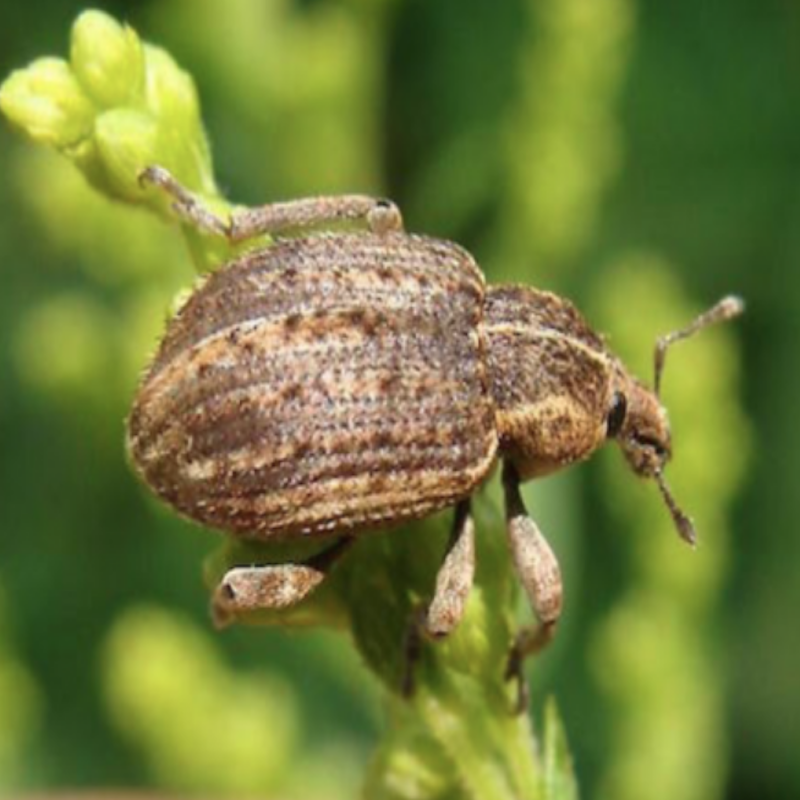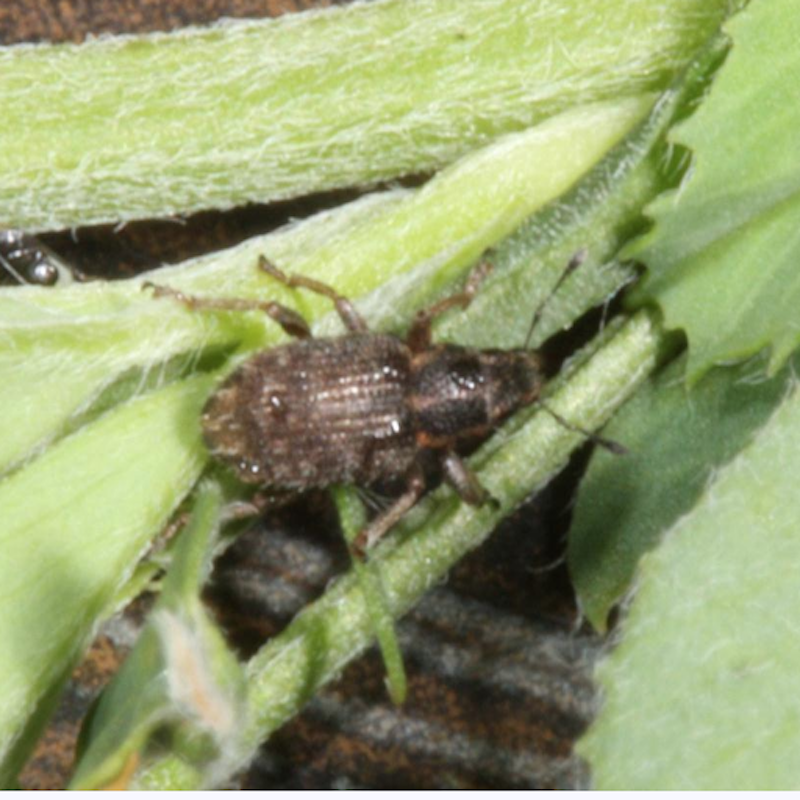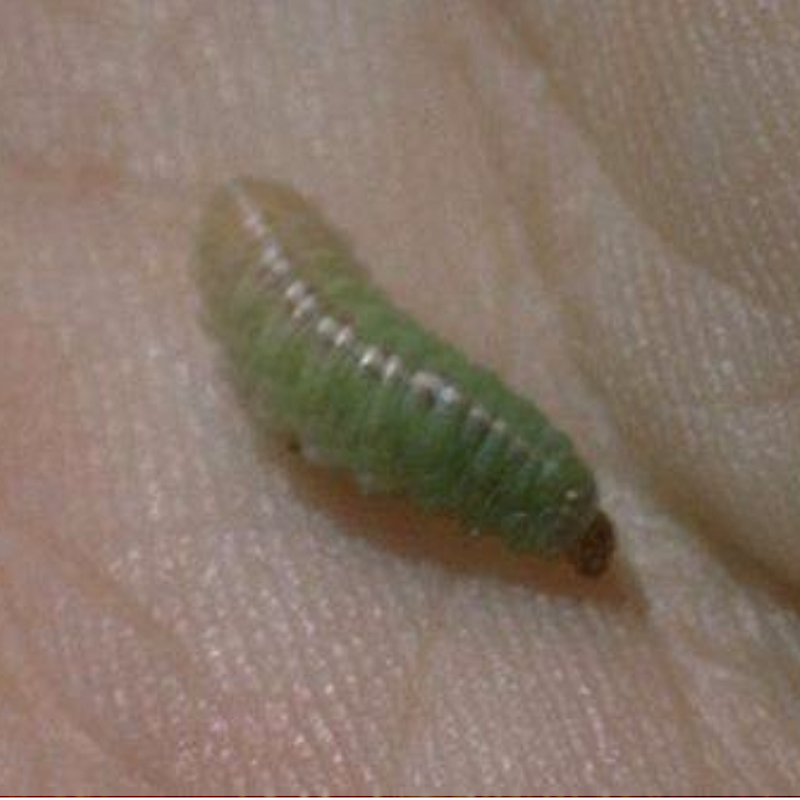
Clover leaf weevil adult


The clover leaf weevil, Hypera punctata (Fabr.), is a native of Europe, but has long been present in North America and is now established in most areas where clover and alfalfa are grown. The adult is a brown weevil about 1/4 inch long with indistinct stripes on its back. Adults resemble alfalfa weevils, but are three or more times as large. They lay yellow oval eggs around their host plants, usually in the fall. A few weevils may overwinter and deposit eggs during mild days of winter or early spring. Most eggs hatch in the fall, but some remain through the winter. The young larvae from the fall-hatched eggs feed throughout the winter during mild periods and become full grown in late March to early May. Clover leaf weevil larvae look a lot like alfalfa weevil larvae in that both are green with a white line down the back. However, the clover leaf weevil larvae have a brown head capsule and feed on the lower parts of alfalfa plants, rather than having a black head capsule and feed on the upper tips of the alfalfa. Feeding occurs mostly at night. During the day the larvae often hide in leaf litter around the crown of alfalfa plants. The later instars also often have a pinkish color associated with the line down their back. When full grown they are just under a 1/2 inch in length, noticeably larger than larvae of the alfalfa weevil. Pupation takes place within an oval cocoon just beneath the surface of the soil or in debris near the base of the plants. Adults then emerge a few days later, usually feed for a few days, and then become inactive for most of the summer.
